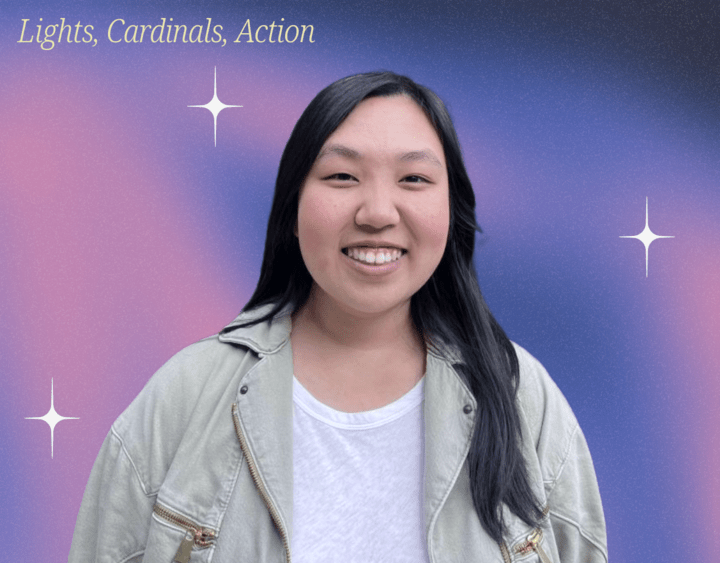Behind our favorite animations is a crucial yet often forgotten group of artists who translate story to screen, one panel at a time. Storyboard artists like Joanna Kim ’15 work closely with directors to sketch illustrations that visualize an animation’s narrative. These illustrations form the blueprints of what we see on screen.
Kim is a storyboard artist for the Nickelodeon show “Blaze and the Monster Machines,” and her past credits include storyboarding for Showtime’s “Our Cartoon President” and “The Late Show with Stephen Colbert.” She spoke with The Daily about her experience in storyboarding, the process through which “animation comes alive.”
The Stanford Daily [TSD]: How did you discover storyboard art?
Joanna Kim [JK]: After graduating with a computer science degree from Stanford, I realized I didn’t want to go into engineering. I didn’t know exactly what to do, but I knew I loved animation. I loved anime and manga growing up and wanted to be a comic book artist. I literally went through a list of positions in animation and read their descriptions. I asked my friends if they knew people in animation and cold contacted a bunch of people to figure out what storyboarding is. Once I got a good enough idea of it, I took courses at the School of Visual Arts in New York and online. The further I tried things in storyboarding, the more I liked it.
TSD: What was your favorite job or TV show you worked on, and what was it like?
JK: My favorite job is my current one — working on “Blaze and the Monster Machines.” It’s a preschool show with Nickelodeon. I really like kids shows and being able to draw cute things, and the people on the team are super passionate. It’s fun to be in a meeting with them; there are suggestions coming left and right about what kinds of shots would be really cool.
TSD: As a storyboard artist, what do you do to put together one episode?
JK: The first rough pass on the script is thumbnails — they allow the director and the showrunners to see if it feels right — and this is done by another team. Then, in the next pass, I do some cleanup and redo scenes kids might not understand. One day I’ll sit down with the director for an hour or two, and we’ll hash out shot by shot what’s working and what’s not. It’s a good time to bring up ideas you have, such as visual gags or interesting ways to do the shot. Then I spend a week drawing my first pass of it, which ends up being 200 to 300 panels, but those are pretty rough. We discuss if things still work or need to be changed. Finally, I do a cleanup to make the lines prettier and address all the feedback from the director. That’s pretty much the whole course of one episode, and I usually take on about a fourth of a 22-minute episode.
TSD: What was your experience working for “The Late Show with Stephen Colbert”?
JK: I worked on the animated shorts they have for the Christmas special and election special. Those are really fun. The scripts are hilarious. I worked one-on-one a lot with the director and producer, Tim Luecke, because the turnaround was pretty fast. He was also having a lot of fun with it. Unfortunately, I never got to see Colbert.
TSD: How did you find your storyboarding opportunities?
JK: The first job was from the recommendation of someone I met at the airport! I was showing my portfolio at an animation convention, CTNX, and on the flight back to New York, I ran into Meaghan Horner, who was the assistant director for “Our Cartoon President,” the show for which Colbert served as executive producer. She happened to see my portfolio and remembered me, so I got to do a test with them. From there, I’ve gotten freelance jobs, mostly from people who I’ve worked with inviting me to join their own projects.
TSD: How did Stanford prepare you for your storyboarding career?
JK: The most directly helpful thing was being part of the Stanford Graphic Novel Project. That was the first time I finished a really large creative project from start to finish. Having that experience gave me an idea of what it was like to work on a team long term to do something creatively.
TSD: Do you have any advice for Stanford students interested in storyboard art?
JK: I have three pieces of advice. First, there are so many amazing resources both in and out of Stanford. If there are certain technical skills you want to learn, take some online courses. The second piece of advice is that it would be helpful to find your community, the people you can envision working with in the future and who are walking the same path as you. It’s great to have people you admire, the greats, as your north star, but the people who really inspire you to take each next step are the people right beside you and ahead of you. The third is that a career isn’t a sprint; it’s a marathon. Take care of yourself; be patient. You’re going to be in it for the long haul. If there are setbacks, they’re blips in what is a very long career.
